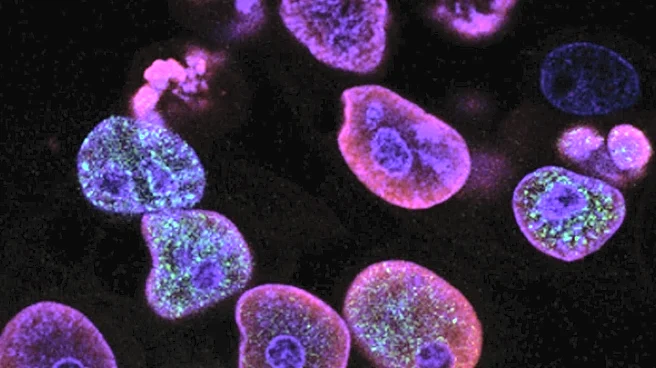What's Happening?
A recent study has identified plasma extracellular vesicles-derived microRNAs as potential biomarkers for distinguishing between focal cortical dysplasia (FCD) types I and II. Conducted at the Pediatric
Epilepsy Center of Peking University First Hospital, the research involved patients with drug-resistant epilepsy who underwent surgical treatment. The study found significant differences in the extent of surgical resection between FCD type Ia and IIb cases, emphasizing the need for a balance between complete lesion removal and brain functionality preservation. The analysis of differentially expressed miRNA and mRNA in FCD patient plasma EVs and surgically removed brain FCD samples revealed new insights into the differences in fluid-brain interactions between FCD Ia and IIb patients.
Why It's Important?
The findings of this study are significant for the medical community, particularly in the field of epilepsy treatment. By identifying specific biomarkers, the research provides a potential pathway for more accurate diagnosis and tailored treatment plans for patients with FCD. This could lead to improved surgical outcomes and better management of epilepsy, reducing the risk of recurrence and enhancing the quality of life for patients. The study also contributes to the broader understanding of the molecular mechanisms underlying different types of FCD, which could inform future research and therapeutic strategies.











